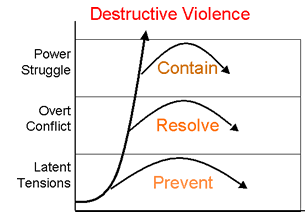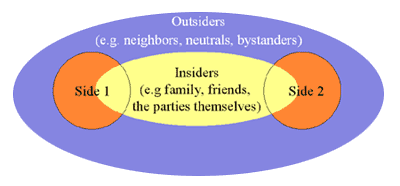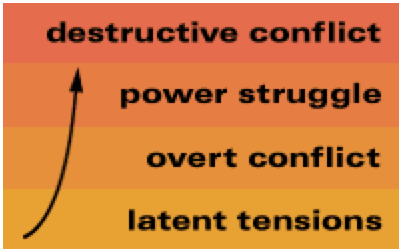In the workplace
Torn by interdepartmental rivalries, corporate lawsuits, strikes, employee grievances, and unexpected violence, there are also signs of the Third Side at work. “When my sales representatives create conflicts, they’re often over customers and territories,” says Michael Rosenberg, president of a home food delivery service. He asks the quarreling salespeople to exchange customers or to work as a team. “This way,” he explains, “they’re forced to help each other for the good of the company, rather than worrying about protecting their own turf.”
Thousands of businesses and government agencies have appointed ‘ombudspersons,’ people whose full-time job is to help employees, on a confidential basis, resolve their disputes with management and one another. Once confined to settling union-management contractual disputes, mediation is increasingly being used to resolve employee and customer grievances. Many businesses are also binding themselves in advance to use mediation and arbitration rather than court to resolve their disputes with customers, suppliers, and partners. Of the one thousand largest corporations in America, nearly ninety percent report having used mediation to settle a dispute in order to save money, achieve a more satisfactory agreement, and preserve a good relationship.
Inside many organizations, facilitators are working with cross functional teams to overcome interdepartmental issues. Managers are learning to mediate among their teammates, their employees, and often their multiple bosses. The success of a company is coming to depend on the ability of its people to resolve the innumerable conflicts that crop up between manufacturing and marketing, sales and headquarters, employees and supervisors, and to seek a “triple win” – a solution good for each side and for the company as a whole.




